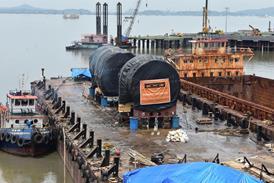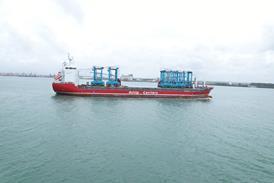March 20 - The U.S. Coast Guard announced publication in the Federal Register of a final rule for standards for living organisms in ships' ballast water discharged into waters of the United States.
The Coast Guard is amending its regulations on ballast water management by establishing a standard for the allowable concentration of living organisms in ballast water discharged from ships in waters of the United States. The Coast Guard is also amending its regulations for engineering equipment by establishing an approval process for ballast water management systems.
"Once fully implemented, this ballast water discharge standard will significantly reduce the risk of an introduction of aquatic nuisance species into the Great Lakes," said Rear Adm. Michael N. Parks, commander of the Ninth Coast Guard District in Cleveland.
The numerical limits set by the discharge standard in this Final Rule are supported by reports from the National Academy of Sciences and the EPA Science Advisory Board in 2011 as the most stringent that vessels can practicably implement and that the Coast Guard can enforce at this time.
Vessels entering the Great Lakes will still be required to fully exchange or flush their ballast tanks with seawater until they are equipped with the approved ballast water treatment systems that meet the discharge standard. All inbound foreign vessels are examined in Montreal by a working group of U.S. and Canadian agencies, including the U.S. Coast Guard, to ensure the ballast tanks are exchanged or flushed as required.
The final rule is effective 90 days after publication in the Federal Register, which is available through the new Federal Digital System at http://www.gpo.gov/fdsys/.















